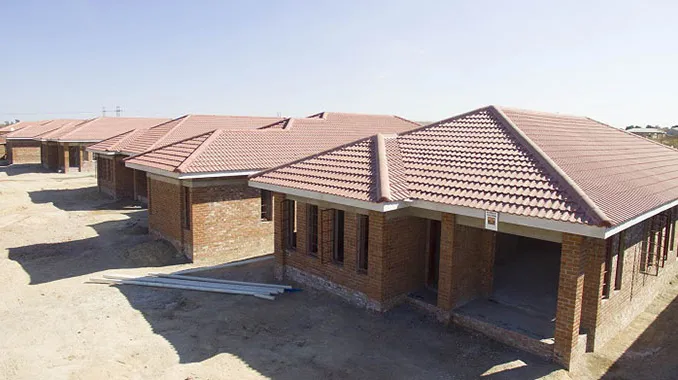Over the past few years, Zimbabweans have been grappling with the reality that property in Zimbabwe is more expensive than in South Africa.
This is particularly puzzling because the neighbour, South Africa, with a stronger economy has lower property values. It’s surprising that Zimbabwe, with its struggling economy, has such expensive property options in comparison.
If you want to buy an apartment in the City Centre in Zimbabwe, you will pay $1,296.07 (R24,651.15 ) per square meter. In South Africa, the same type of apartment costs $863.62 (R16,426.03) per square. However, if you are okay with an apartment outside the City Centre, it will cost you $1,200.00 (R22,824.00 ) in Zimbabwe and $663.62 (R12,622.01 ) in South Africa per square meter.
Zimbabwe property prices increased by 37% in 2020, while South Africa’s property prices only increased by around 3.57%, according to statistics from the Global Property Guide.
When exploring the factors behind this, some interesting dynamics come out, speaking to the issue of supply and demand, growing population and the macro-economic environment.
I took some time to understand what real estate experts have said on the issue and these are some interesting arguments they put across.
Why is there such a disparity between Property Prices in Zimbabwe vs. SA?
Is it a matter of Supply and demand?
When it comes to economics, the simple rule is the higher the demand, the higher the price. It’s the classic case of supply and demand, where the limited availability of something that is highly sort after pushes prices upwards. But let’s talk about the current craze in Zimbabwe: property. There’s been a noticeable surge in demand lately, fueled by a variety of reasons we’ll look into. Keep reading.
Growing Population
Experts say the growing Zimbabwean population, which is expected to reach 18 million by 2030 is one of the reasons why there is high demand. Despite the macroeconomic environment characterized by weak mortgage financing and high cost of debt, the appetite for high-end residential properties remains strong, Kenneth Sharp, CEO of West Properties, one of Zimbabwe’s major property developers, was quoted as saying: The demand that has influenced the pricing of property especially in the housing market. This balloon is putting a strain on the country’s housing stock, raising the price.
Rural-to-urban migration
The demand for housing has also come as a result of rural-to-urban migration as people move to the big cities and small towns in search of employment and other opportunities. The urban population of Zimbabwe is expected to reach 10 million by 2030, representing a significant growth.
Macro-Economic Environment
Of course, the economy has a hand in the high prices of property in Zimbabwe. The macroeconomic environment has driven up costs. The cost of construction inputs and interest rates is one of the major cost drivers, which has seen some properties being priced beyond consumer reach.
Also, the current interest rate, sitting at 150%, is one of the factors that is hiking up borrowing costs which increases the price for buyers. Another notable trend is that sellers often prefer US dollars, which also increases expenses for buyers, Seeff Property Group observed in a blog post.
Let’s take a look across the border
South Africa’s housing market has been sluggish over the years, mainly due to high unemployment, weak household finances, and an underdeveloped mortgage market, as per Global Property Guide. From 2007 to 2021, house prices rose by about 69% but when adjusted for inflation, real prices actually fell 19%.
Unlike in Zimbabwe where demand for property is rising, it seems the situation is different across the Limpopo. FNB’s Q2 2022 Property Barometer posits that Demand remained subdued, with nationwide residential market activity weakening in Q2 2022 compared to the previous quarter.
The poor performance of South Africa’s housing market could also help explain the difference in prices.
Well…
So my observation is that the property price disparity between Zimbabwe and South Africa is a complex issue with multiple contributing factors. Its also important to note that while Zimbabwean properties are more expensive overall, there are certain areas in South Africa where property prices can exceed those of Zimbabwe.
From growing population, rural to urban migration, and macro-economic environment lies the answer to why the property price disparity exists. Understanding these factors is important for anyone looking to invest in Zimbabwe’s real estate market.








